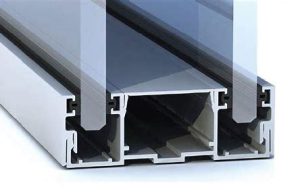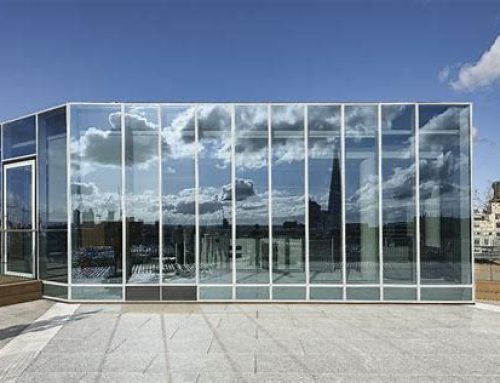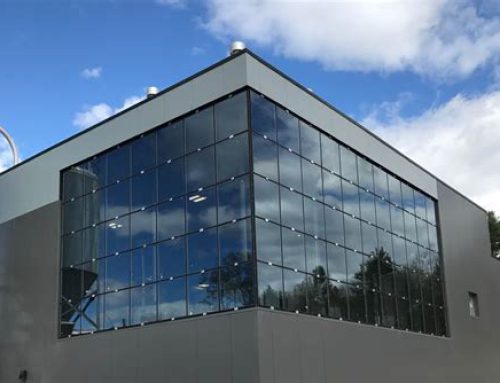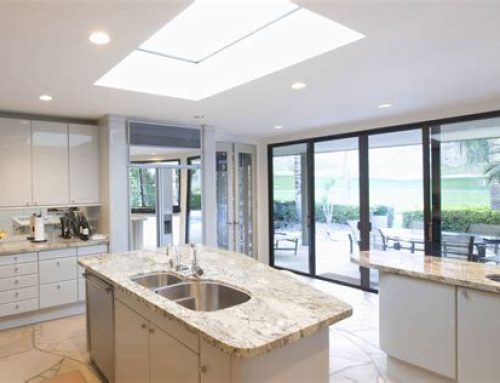Glass wall profile cost

Glass wall profile cost ,Glass walls are a popular architectural choice, offering an elegant and modern aesthetic while maximizing natural light and space. One crucial component of glass wall systems is the profiles, which are the frames that hold the glass panels in place. When considering the cost of installing glass walls, it’s essential to understand the factors that influence the pricing of these profiles.
Types of Glass Wall Profiles:
Glass wall profiles come in various materials, designs, and functionalities, each with its own cost implications. Some common types include:
- Aluminum Profiles: Aluminum is a popular choice for glass wall profiles due to its strength, durability, and lightweight nature. It’s also highly customizable, allowing for different finishes and designs to match the aesthetic of the space. Aluminum profiles tend to be relatively affordable compared to other materials.
- Steel Profiles: Steel profiles offer excellent strength and stability, making them suitable for large glass panels or areas with high wind loads. However, steel profiles are usually more expensive than aluminum due to the higher cost of materials and manufacturing.
- Wooden Profiles: Wooden profiles provide a warm and natural look, making them popular in residential and commercial spaces seeking a more rustic or traditional aesthetic. While wood profiles can be costly, they add a unique charm and character to the design.
- Glass-Fiber Reinforced Concrete (GFRC) Profiles: GFRC profiles combine the strength of concrete with the versatility of glass fibers, offering a durable and visually striking option for glass wall systems. While initially more expensive than some other materials, GFRC profiles may provide long-term cost savings due to their durability and low maintenance requirements.
Factors Influencing Cost:
Several factors influence the cost of glass wall profiles:
- Material: As mentioned earlier, the material of the profile significantly impacts its cost. Aluminum profiles are generally more affordable than steel or wood, while GFRC profiles may have a higher upfront cost but lower long-term maintenance expenses.
- Size and Complexity: The size and complexity of the glass wall system will affect the amount of material and labor required for the profiles. Larger or custom-designed profiles may incur higher costs due to increased manufacturing or installation complexity.
- Finish and Customization: Custom finishes, colors, and designs can add to the cost of glass wall profiles. While standard finishes may be more budget-friendly, unique or specialized finishes may require additional labor and materials, resulting in higher expenses.
- Installation Requirements: Installation costs can vary depending on factors such as site conditions, accessibility, and project timeline. Complex installations or projects in remote locations may require specialized equipment or additional labor, leading to higher overall costs.
Cost Considerations:
When budgeting for glass wall profiles, it’s essential to consider not only the upfront material and installation costs but also the long-term implications:
- Maintenance: Different materials require varying levels of maintenance. Aluminum profiles are relatively low maintenance, requiring occasional cleaning and routine inspections for damage or wear. In contrast, wood profiles may need more frequent maintenance, such as sealing or refinishing, to protect against moisture and decay.
- Energy Efficiency: Glass wall systems can impact the energy efficiency of a building by influencing heat gain or loss. Investing in high-quality profiles with thermal breaks or insulating properties can help improve energy efficiency and reduce long-term heating and cooling costs.
- Durability and Lifespan: Consider the expected lifespan of the glass wall profiles and factor this into the overall cost analysis. While some materials may have a higher upfront cost, they may offer greater durability and longevity, resulting in lower replacement or maintenance expenses over time.
- Regulatory Compliance: Ensure that the selected glass wall profiles meet relevant building codes and regulatory requirements. Non-compliance can lead to costly delays or retrofitting efforts, so it’s essential to factor in any additional expenses associated with compliance.
Choosing the Right Glass Wall Profile:
Selecting the appropriate glass wall profiles requires careful consideration of various factors beyond cost alone:
- Aesthetic Appeal: The profile design and finish should complement the overall design aesthetic of the space. Whether aiming for a sleek and modern look with aluminum profiles or a more rustic charm with wooden profiles, the chosen profiles should enhance the visual appeal of the glass wall system.
- Functionality: Consider the intended function of the glass wall system and select profiles that meet the performance requirements. Factors such as sound insulation, thermal efficiency, and security features should be taken into account to ensure the profiles contribute to the functionality of the space.
- Environmental Impact: Sustainable design practices are increasingly important in modern construction projects. Look for profiles made from environmentally friendly materials or those with high recyclability to minimize the environmental footprint of the project. Additionally, consider the energy efficiency of the profiles and their contribution to overall building performance.
- Manufacturer Reputation: Choose reputable manufacturers or suppliers with a track record of delivering high-quality products and excellent customer service. Working with reliable suppliers can help ensure the durability, reliability, and performance of the glass wall profiles over time.
Cost-Effective Strategies:
While it’s essential to invest in quality glass wall profiles that meet project requirements, there are several strategies to optimize costs:
- Standardization: Standardized profiles and finishes may offer cost savings compared to custom designs. By selecting off-the-shelf profiles that meet project specifications, it’s possible to reduce manufacturing lead times and minimize expenses associated with customization.
- Value Engineering: Collaborate with architects, engineers, and suppliers to identify opportunities for value engineering without compromising performance or aesthetics. This may involve exploring alternative materials, optimizing design configurations, or streamlining installation processes to achieve cost savings while maintaining quality.
- Lifecycle Cost Analysis: Consider the total cost of ownership over the lifespan of the glass wall system rather than focusing solely on upfront costs. A lifecycle cost analysis takes into account factors such as maintenance, energy efficiency, and longevity to determine the most cost-effective solution for the project.
- Negotiation and Bulk Purchasing: Engage in negotiations with suppliers to secure competitive pricing for glass wall profiles, especially for larger projects or bulk orders. Leveraging economies of scale through bulk purchasing can help lower unit costs and improve overall project affordability.
Project-Specific Considerations:
In addition to the general factors discussed, each project may have unique considerations that impact the cost of glass wall profiles:
- Location: Projects in high-cost urban areas or remote locations may face different cost dynamics due to factors such as labor availability, transportation expenses, and local regulations. Understanding the specific challenges of the project location can help anticipate and mitigate cost-related risks.
- Building Type: The type of building and its intended use can influence the selection of glass wall profiles and associated costs. For example, commercial buildings may prioritize factors such as branding, security, and durability, while residential projects may focus more on aesthetics, comfort, and energy efficiency.
- Design Complexity: Projects with intricate architectural designs or unique structural requirements may require custom-designed glass wall profiles, which can incur higher costs compared to standard profiles. Balancing design aspirations with budget constraints is crucial to achieving the desired outcome within financial parameters.
- Timeline: Project timelines can impact costs, particularly if accelerated schedules or tight deadlines require expedited manufacturing or installation processes. Early engagement with suppliers and contractors can help develop realistic timelines that account for lead times and potential scheduling constraints.
Risk Management:
Effective risk management is essential to control costs and mitigate potential challenges throughout the project lifecycle:
- Contingency Planning: Allocate a contingency budget to address unforeseen expenses or scope changes that may arise during the project. Having a buffer can help manage risks and prevent budget overruns, ensuring the project stays on track financially.
- Quality Assurance: Prioritize quality assurance measures throughout the procurement, manufacturing, and installation processes to minimize the risk of defects, rework, or warranty claims. Investing in quality upfront can help avoid costly issues down the line.
- Contractual Clarity: Establish clear contractual agreements with suppliers, manufacturers, and contractors to define scope, responsibilities, deliverables, and payment terms. Clear communication and alignment on expectations can help prevent disputes and cost overages.
- Regular Monitoring and Reporting: Implement robust project management practices to track costs, progress, and performance metrics against established benchmarks. Regular monitoring and reporting enable early identification of potential cost variances or project risks, allowing for timely intervention and corrective action.
Continuous Improvement:
Finally, embrace a culture of continuous improvement to optimize processes, enhance efficiencies, and drive cost savings over time:
- Post-Project Evaluation: Conduct post-project reviews to assess lessons learned, identify areas for improvement, and capture best practices for future projects. Feedback from stakeholders, including designers, contractors, and end-users, can inform future decision-making and drive continuous improvement initiatives.
- Technology Adoption: Explore innovative technologies, such as Building Information Modeling (BIM), digital fabrication, or prefabrication techniques, to streamline processes and reduce costs. Embracing technology-driven solutions can enhance productivity, accuracy, and collaboration across project stakeholders.
- Supplier Collaboration: Foster collaborative partnerships with suppliers and manufacturers to explore cost-saving opportunities, such as bulk purchasing discounts, value-added services, or joint innovation initiatives. Engaging suppliers as strategic partners can unlock new efficiencies and drive mutual business value.
In conclusion, managing the cost of glass wall profiles requires a comprehensive understanding of project-specific factors, effective risk management strategies, and a commitment to continuous improvement. By proactively addressing cost considerations, mitigating risks, and embracing opportunities for optimization, project stakeholders can achieve successful outcomes that meet budgetary requirements without compromising quality or design integrity, Glass wall profile cost , Glass wall profile cost.





Leave A Comment